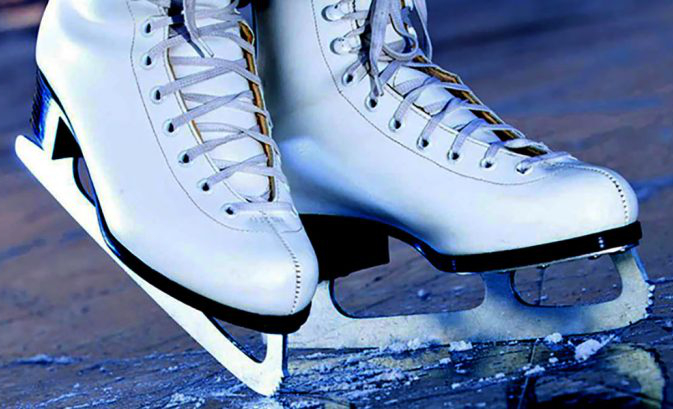 |
Proper equipment is essential to becoming skilled in most sports, and skating is no exception! Skaters cannot learn skills unless their skates fit well and support their ankles. A well thought out purchase of good skates will encourage enthusiasm and excitement in anyone learning to skate. If at anytime you have questions or concerns regarding your equipment, please consult with any of our coaches. |
STARSkate Clothing and Equipment
Skates
A good pair of used skates will always be better than a pair of poor-quality new ones. Your coach is the best source of information on which skates are best for your child or a store that specializes in skates like the Figure Skating Boutique.
- Look for figure skates with laces and firm ankle support
- Leather skates are recommended, not plastic adjustable or bob skates
- Make sure the skates are well sharpened
- Skates should not be sharpened just before a test or competition; a skater should have enough time to skate on them two or three times first.
Choosing the right size
- Wear only one pair of socks or tights – the ones you will wear when skating
- Partially unlace boot through instep and slide foot forward – toe can touch the front, but not cramped
- Stand with weight equally distributed over both feet and bend your knees – the space at the back of the heel should be no more than a pencil width
- To check if the width of the skates fit the foot walk around in the skates off the ice – they should be snug but comfortable
StarSkate Clothing/Attire Policy
Each skater is required to wear their hair up in a ponytail or bun and secured with hair clips, hair out of their face. Skaters are required to wear proper skating attire.
- Girls are expected to wear a skating dress, skirt or stretch pants (slim fitting tights or leggings)
- Wide legged yoga pants, jeans, leggings, track/jogging pants are not allowed
- Boys are expected to wear suitable pants and a sweater or jacket (without hood)
- Gloves/mittens are recommended but need to be fitted, no oversized mitts
- Warm, form fitting sweaters with a fitted lighter shirt underneath. No bulky clothes like baggy sweaters, hoodies or layering are allowed as it hinders movement
- No scarves are allowed
- Headbands and beanie hats are preferred, please refrain from wearing a toque or hats with pom-poms
- No winter jackets or any other type of coats are allowed on the ice
Skaters not wearing proper attire will be asked to leave the ice.
Taking care of your skates
After your lesson is done
Dry blades and sole plate completely with a cloth and remember to ALWAYS wear skate guards when not on the ice so your skates do not get damaged.
At home, when not in use
Remove skates from the skate bag, remove the guards and leave the skates in the open so that they can air dry thoroughly, allowing the leather to breathe.
Skate sharpening
All new skates and skates that have not been skated on for a month will need to be sharpened before you skate on them. Re-sharpen skates after approximately 20-30 hours of skating. More frequent sharpening may be required, if the skater walks on concrete, rubber or carpeted surfaces without guards, if the blades are not wiped dry, or if there are nicks and rough surfaces on the edges of the blade.
Remember. . .
Skates should not be sharpened just before a test or competition; a skater should have enough time to skate on them two or three times first.
![]() Tip!
Tip!
Avoid buying larger size skates for your child to “grow into”. Skates that are too loose will interfere with their skating and may actually be dangerous because of lack of support.